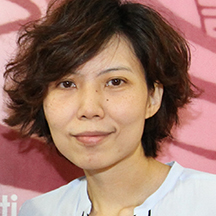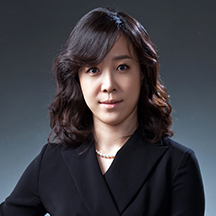Associate Professor and Programme Director of Master of Mass Communication,
Wee Kim Wee School of Communication and Information,
Nanyang Technological University, Singapore
Augustine Pang, PhD, is an Associate Professor and Program Director of Master of Mass Communication at Wee Kim Wee School of Communication and Information, Nanyang Technological University. He specializes in crisis management and communication; image management and repair; media management, and public relations. He publishes actively in Handbooks and peer-reviewed journals. He is thankful for the research awards won at the International Communication Association (2015), Corporate Communications International Conference (2014, 2009 and 2008); the Association of Educators in Journalism and Mass Communication (AEJMC) conference (2015, 2010 and 2007), and the International Public Relations Research Conference (2009, 2004 and 2005).
Title and Abstract:
A Broad Stroke or Different Strokes for Different Folks? Examining the Subtleties in Crisis Management Approaches between State-owned Enterprises and Privately-owned Enterprises in China
In 2008, the Sanlu Group, a former giant in Chinese dairy industry and a quintessential Chinese organization, was confronted with the melamine-contaminated milk crisis. Its products were blamed for causing at least six babies’ deaths and damaging the kidneys of about 294,000 babies. Sanlu was criticized for its crisis handling, which resulted in its collapse several months later. Ye and Pang (2011) attributed its failure to manage the crisis to cover-ups and toeing the “upper-level” line, or relying on the government to bail it out. Sanlu was a state-owned enterprise (SOE).
With the increasingly important status of China in the international community, scholars are beginning to pay considerable attention to how crises are managed in China. For example, studies have examined how China managed its dispute with the U.S. over the collision of a U.S. Navy reconnaissance plane with a Chinese fighter jet in 2001 (Zhang, Qiu, & Cameron, 2003); how the Chinese government managed the Severe Acute Respiratory Syndrome (SARS) crisis in 2003 (Jin, Pang, & Cameron, 2007); how the Chinese government managed the Chinese products recall in 2007 (Cai, Lee, & Pang, 2009); and how the Chinese government responded to the Sichuan earthquake in 2009 (Chen, 2009). Very few studies have investigated Chinese domestic organizations’ approaches to crisis management. Yet, it is critical to study these organizations because they symbolize the intricacies of managing crises at the local levels, away from the glare of the international media. It also sheds light into the layers of bureaucracy and complexity of relations that is an intrinsic part of Chinese crisis management.
Besides the SOEs, Chinese domestic companies also comprise of privately-owned enterprises (POEs). SOEs refer to enterprises fully owned by the state through the State-owned Assets and Supervision and Administration Commission (SASAC) of the State Council and of provincial, municipal, and county governments. POEs, on the contrary, refer to economic units invested in or controlled by individuals, including limited liability corporations, shareholding corporations, partnership enterprises and sole investment enterprises (Szamosszegi & Kyle, 2010).
Given the growing economy in China, it is natural to compare POEs against SOEs. Each has its own different business orientations, organizational structures, corporate cultures and communication mechanism which may lead to different styles of crisis management (Joseph, 2013). This study examines the differences between the SOEs and POEs in terms of crisis response strategies, use of communication channels, attitudes towards the media, and relations with the government.
Data comes from interviewing 20 participants selected based on the following criteria.
- They had worked for at least three years in the top 20 PR companies in China (according to the list provided by CIPRA 2013) in corporate communication or crisis management consultancy or;
- They have worked in Chinese privately-owned enterprises (POEs) or state-owned enterprises (SOEs) for at least five years and have experience managing corporate crises.
The research questions are:
- How do SOEs and POEs relate to the government in times of crisis?
- How do SOEs and POEs conduct media relations in times of crisis?
- What communication channels do SOEs and POEs use in times of crisis?
- What crisis response strategies do they use in times of crises?
- How do the crisis management styles between the SOEs and POEs differ?
While characteristics like silence, cover-ups, saving face and guanxi may still dominate Chinese management styles, it is hoped that insights will shed light on the subtleties for both academics and practitioners on how crisis management are conducted in these two of the major types of enterprises instead clustering them as a collective whole when analysing Chinese organizations.
List of Speakers





